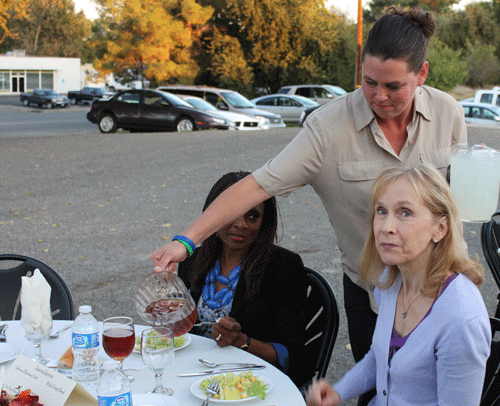How to check the effectiveness of your communication
BY ROBERT DOCTER –
Do you ever have people angry with you–hurt by you–ignoring you–or confused by what you mean–and can’t figure out why? Be concerned about the total message you send.
It all boils down to the effectiveness of both the sender and the receiver working together as closely as possible in order to achieve a complete communication.
In whatever we do in human interaction, we can’t not communicate.
For instance–you walk quickly and purposefully toward an objective, deep in thought about something else, not paying too much attention to what’s happening around you. You fail to notice Mrs. Hoosie, that sweet senior standing there. You’re not aware you’ve sent a message–but boy–have you ever sent a message.
I can hear that gentle lady talking to herself even now: “Humph! I always knew he/she was snooty and stuck-up.”
Now, suppose, while passing hurriedly, you had added a quick “Good morning, Mrs. Hoosie–good to see you.” Maybe you even smiled and nodded your head while still knowing you had to take care of urgent business right away–allowing no time for a reply.
No win. Mrs. Hoosie says to herself: “Well…he/she doesn’t really mean that–can’t take time to care about me at all. I just don’t count any more.”
We tend to forget the complexity of the communications process. Different channels of the process operate simultaneously–some verbal–some vocal–some visual. The vocal and the visual channels make up non-verbal communication. The vocal part of that is the tone of voice, the rate of speech, the punctuation points, the pitch and volume, and the syntax of the communication. The visual part is the body language channel that sends messages through our facial expressions, our gestures and posture, the space between us, our movement. Non-verbal communication represents the command structure–the pecking order–of the process. It provides the bulk of the actual meaning of the communication. It’s everything in the process that isn’t words. It delivers the feelings and attitudes we have about the message, about the people who are receiving it, and about our selves in the process.
Words comprise the verbal side of the message. They make up about 10% of the meaning of our messages. The words in the above example were kind and gentle. The body language, however, sent a different message that wasn’t interpreted too gently.
When you fail to generate channel consistency you also fail to communicate genuineness.
The message is incongruent. You’ve sent a double message–one non-verbally, the other verbally.
Now–as if you didn’t already know–you’re not the only participant in the communication process. Up above, I have you as the “sender” of the message–the encoder. Obviously, you also have a receiver of the message–Mrs. Hoosie. She’s the decoder.
The meaning of the message is the responsibility of both. It would be nice if both were on the same page. It would be even nicer if both were completely aware of the factors in the relationship and knew how to complete a message.
You see–we tend to think interpersonal communication is a direct line between the sender and the receiver. We see it as linear. It’s not. We need to think of it as circular. Here’s an example of a simple communication. Let’s say you send a message–either verbally, non-verbally, or both. “Got the time?” The receiver hears or sees the message and does something with it. “Yeah–it’s 7:45.” If what was done was satisfying to you, you register completion of the message. “Thanks.”
If the receiver had said something like: “You better get going–you’re late”–you’re stuck with an unfinished communication–still open.
We need to find ways to complete communication or at least provide feedback necessary to find a way to close it.
There’s another one–feedback–crucial–cause if you ignore it–









